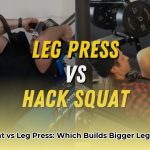# Lift Heavier with Elbow Wraps: Your Comprehensive Guide to Gains and Injury Prevention
Elbow wraps can unlock your weightlifting potential! This guide provides expert advice on choosing, using, and maintaining elbow wraps. Learn how to maximize your workouts and minimize injury risk, regardless of your experience level. Ready to transform your lifting? Let's begin!
## Understanding the Benefits of Elbow Wraps for Weightlifting
Elbow wraps provide stability and support to the elbow joint during intense weightlifting. They can boost your strength, increase your reps, and reduce post-workout soreness. However, remember that elbow wraps are not a substitute for proper form and technique. Always prioritize safety when lifting. Elbow wraps can reduce elbow soreness after intense workouts, promoting faster recovery.
## Choosing the Right Elbow Wraps: A Detailed Buying Guide
Selecting the right elbow wrap is crucial for optimal performance and injury prevention. Here's what to consider:
**Material:**
* **Neoprene:** Excellent compression and heat retention for muscle warm-up. Ideal for colder environments.
* **Cotton Blends:** Breathable and comfortable, suitable for warmer conditions or heavy sweaters. Less compression than Neoprene.
* **Elastic:** Offers a balance of support and flexibility. Often blended with other materials.
**Types of Wraps:**
* **Bandage-Style Wraps:** Highly customizable compression for targeted support. Requires practice to apply correctly.
* **Elbow Straps (with Velcro or Elastic):** Focused support around the elbow joint. Easy to use but offer less overall compression.
* **Compression Sleeves:** Consistent, all-around compression for the entire elbow area. Easy to wear but provide less adjustable support.
**Length:**
* **Longer Wraps:** More support for movements with larger ranges of motion (e.g., bicep curls, triceps extensions).
* **Shorter Wraps:** Targeted support for exercises that place less stress on the elbow.
Choose a wrap that matches your specific needs and training style.
### Understanding GSM (Grams per Square Meter)
GSM refers to the density of the fabric. Higher GSM indicates a denser, more durable, and often stiffer material. In elbow wraps:
* **Lower GSM (e.g., below 300):** More flexible, less support, suitable for beginners or lighter workouts.
* **Medium GSM (e.g., 300-500):** Good balance of support and flexibility for intermediate lifters and general workouts.
* **Higher GSM (e.g., above 500):** Maximum support and stiffness, ideal for heavy lifting and powerlifting.
## How to Wrap Your Elbows for Maximum Support: A Step-by-Step Guide
Proper wrapping technique is essential for maximizing support and preventing injury.
1. **Start with a Comfortable Overlap:** Overlap the wrap slightly to ensure even pressure distribution. Avoid excessive overlap to prevent bunching.
2. **Wrap Firmly, But Gently, from Wrist to Elbow:** Maintain consistent tension throughout the wrapping process. Ensure the wrap feels snug but not constricting.
3. **Keep It Smooth:** Avoid bunching or twisting the wrap. It should lay flat against your skin for even compression and comfort.
4. **Secure the End:** Use the Velcro or other fastening mechanism to secure the wrap. Ensure the closure is comfortable.
5. **Test the Fit:** Move your elbow and wrist to check for discomfort, tingling, or restricted movement. Loosen the wrap if needed. The wrap should support without cutting off circulation.
With practice, you'll find the right balance between support and comfort!
## Maintaining Your Elbow Wraps: Care for Longevity
Proper care extends the life of your elbow wraps.
* **Hand-Wash Only:** Use mild soap and water after each use. Machine washing can damage the material.
* **Air Dry:** Allow the wraps to air dry completely, away from direct sunlight or heat. Heat degrades the materials.
* **Store Carefully:** Store wraps in a cool, dry place to prevent stretching or damage.
Regular cleaning and proper storage maintain the quality of your elbow wraps.
## Potential Downsides: Risks and How to Avoid Them
Elbow wraps have potential drawbacks if not used correctly.
**Potential Problems:**
* **Over-Tightening:** Restricts blood flow, causing numbness, tingling, or more serious issues. Prioritize comfort. If your fingers begin to tingle, loosen the wraps immediately.
* **Overuse:** Dependency and weakening of supporting muscles around the elbow. Use wraps strategically for heavier lifts, not every workout.
* **Incorrect Application:** Uneven pressure, reduced effectiveness, discomfort, or injury. Follow proper wrapping techniques.
Listen to your body. If you experience pain or discomfort, stop using the wraps and consult a healthcare professional.
## The Bottom Line: A Strategic Tool for Weightlifting Performance
Elbow wraps are beneficial for serious weightlifters when used correctly. They provide support, help lift heavier, and reduce injury risk potentially. Choose the right wrap, apply it properly, and prioritize comfort and safety. Remember to listen to your body.
## Proper Sizing of Weightlifting Elbow Wraps for Optimal Performance and Injury Prevention
Elbow wraps and sleeves enhance performance and reduce injury risk. Wraps offer adjustable compression for heavy lifts, while sleeves provide consistent compression for varied movements. Proper sizing ensures effectiveness and safety.
**Key Takeaways:**
* Elbow wraps enhance stability and support during heavy lifts.
* Elbow sleeves offer consistent compression and warmth for general workouts.
* Proper sizing is crucial for optimal performance and safety.
* Different materials offer varying levels of support and comfort.
### Understanding Elbow Wraps vs. Sleeves: Choosing the Right Option
Elbow wraps and sleeves offer distinct benefits. Choose the one that best suits your training style and goals.
* **Elbow Wraps:** Ideal for heavy lifts and powerlifting exercises. Offer adjustable compression and maximum support.
* **Elbow Sleeves:** Provide consistent compression and warmth. Suitable for higher-rep workouts and varied movements. A good choice during colder temperatures.
### Selecting the Right Material for Your Needs
Different materials provide different levels of support, comfort, and durability.
* **Cotton:** Breathable and comfortable, but less supportive than other materials.
* **Nylon/Polyester Blends:** More durable and supportive than cotton.
* **Neoprene:** Excellent compression and heat retention.
* **Elastic:** Added flexibility.
### Measuring for the Perfect Fit: A Step-by-Step Guide
Proper sizing is essential for comfort and effectiveness.
1. **Measure Your Forearm:** Use a measuring tape to measure the circumference of your forearm, approximately 2 inches below your elbow.
2. **Consult the Size Chart:** Check the manufacturer's size chart and compare your measurement.
3. **Test the Fit:** Try on the wraps with light weights and adjust the tightness as needed.
4. **Don't Overtighten:** Restricting blood flow can cause pain and injury.
5. **Consider Wrist Measurement:** Some manufacturers provide sizing based on forearm and wrist measurements.
6. **Seek Guidance:** Consult with a strength and conditioning specialist or a knowledgeable trainer.
### Applying Your Wraps: Maximizing Elbow Support
Correct application maximizes elbow support and prevents discomfort.
* Start by wrapping at the base of your forearm.
Latest posts by mearnes (see all)
- Achieve Consulting Work-Life Balance: A Practical Guide - December 7, 2025
- Achieve Anesthesiology Work-Life Balance: Your Guide - December 4, 2025
- Unlock Young Doctors’ Work-Life Balance: Actionable Strategies Now - December 2, 2025
















